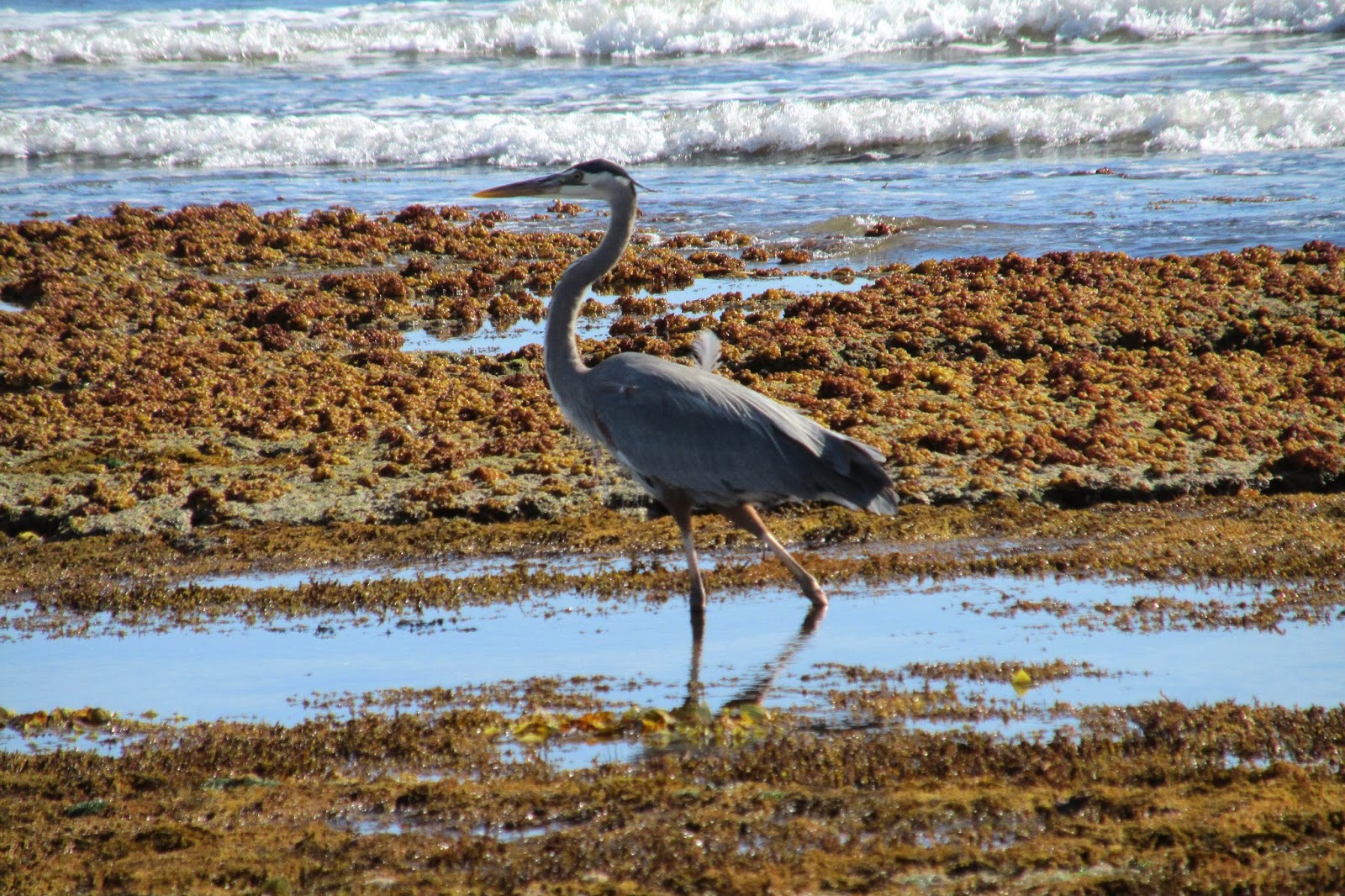It was just a quick trip down to "Tucson's Beach" - Puerto Peñasco, at the head of the Gulf of California, aka the Sea of Cortez. Rapid development is taking over the once-lonely beaches, with a big cruise ship port now being constructed on the beach where we stay. But for now, it's still pretty peaceful. The huge tidal swing creates wonderful tidal flats which attract a great array of seabirds, feasting on the small fish and crustacean population.
After diving time after time for fish, drying one's wings is in order. The large population of brown pelicans stays well-fed in these shallow waters. Several pairs of American oystercatchers hunt along the reef, squawking in complaint and flying off when any human approaches. Don't you just love their colors?
They use that big, bright beak to pry open oysters and other bivalves. The American oystercatcher is a permanent resident around the Sea of Cortez and south. They roost on beaches, dunes or march islands, rarely venturing inland. Nests are simple scrapes on the beach lined with shells. They might make 5 or more nests before choosing one.
The other striking beauty along the beach is the black-necked stilt (Himantopus mexicanus), with long reddish legs, and sharply patterned black and white body.
Black-necked Stilts wade in shallow waters to capture their meals of aquatic invertebrates and fish. They often consume such fare as crawfish, brine flies, brine shrimp, beetles, water boatmen, and tadpoles. They peck, snatch, and plunge their heads into the water in pursuit of their food, and will herd fish into shallow waters to trap them there.
Who is easier to photograph than a great blue heron, his statue-like stance lasting for minutes on end. Even when disturbed, his takeoff is slow and deliberate.
Or the lovely egrets, snowy and great, so elegant in their long, white attire.
In the early morning light I watched a flock of birds circle in unison and then land on the reef. Closer inspection in the binoculars revealed the delicate and beautiful American avocets, joined by a friendly pelican.
As I got closer and the sun rose higher, the breeding colors became evident.That long, thin, upturned bill is used to sweep the shallow water for invertebrates, and to protect the nest against invaders. Avocets will parasitize the nests of other shorebirds, and the avocet nests are often parasitized by other birds as well.
The tide moves quickly in this far end of the gulf, and within a few minutes the avocets perch was swamped, and off they went, long legs trailing behind, flashing their colors in the sun.
Among the tidepools were many small crabs, blending so skillfully into the crusty brown reef, or scurrying to hide in a crevice at the approach of a giant mammal. This one cracked me up. Instead of hiding, he raced out into the open and threw open his arms in a defensive posture, as if saying, bring it on, lady, I'm ready!
The rather plain-looking willet is common along all our shorelines, rather gray in non-breeding colors, and only slightly more colorful when breeding. But when startled, they react with a piercing call, opening their wings and running or taking flight, flashing a distinctive white pattern on the wings.
Just prior to our arrival was a fascinating event, a grunion run. These fish come up onto the sand in huge numbers, twisting themselves into the sand and laying their eggs. The males frantically scurry around the eggs to fertilize them. The incoming tide covers the eggs with sand, where they will hatch with the next full moon and high tide. Meanwhile, however, the shorebirds go into a feeding frenzy, searching for the abundant delicacy. Sandpipers, turnstones, plovers, willets and more, all intent on the buried treasure. Will there be any eggs left to hatch? Surely, with the beach covered with fish and each female laying several thousand eggs, there will be plenty to make their way back to the sea.
Oh, that's not all, of course. There were magnificent frigatebirds, ospreys hunting and nesting, gulls too many to name, terns hovering and diving, cormorants by the hundreds, tiny peeps, whimbrels, plovers and grebes. It was all too brief. But I got my saltwater fix. And my shorebird fix.
Here's hoping all your getaways feed your passions.
















































